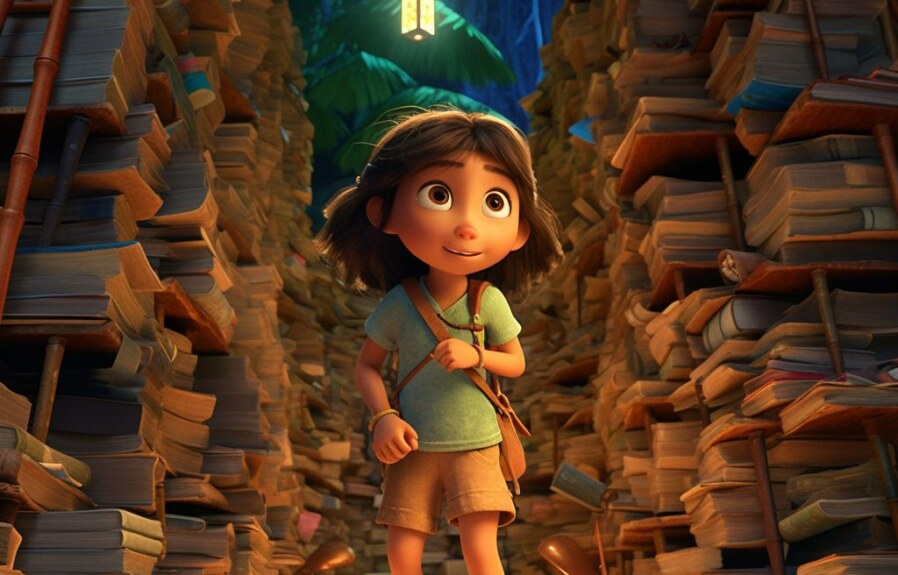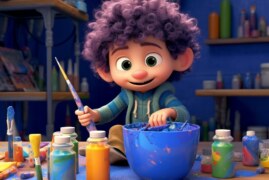As an expert in Art & Design, I am often asked how to create a vintage aesthetic in different mediums. One of the most simple and effective ways is to make paper look old. The process is easy, inexpensive, and can be used for a variety of projects, including scrapbooking, journaling, and artwork. In this article, I will guide you through the steps of how to make paper look old, including methods such as tea staining, baking, and distressing with ink. With a few simple tools and techniques, you can add an antique touch to your paper creations and bring a sense of history and character to your projects.
1. The Importance of Making Paper Look Old in Art and Design
Aging paper is a popular technique that has gained widespread popularity among artists, designers, and crafters in recent years. It involves altering the appearance of a new, fresh sheet of paper to make it look old, antique, or vintage. Why is this technique so important in art and design?
Firstly, aging paper adds character and authenticity to a piece of artwork or design project. It creates a sense of history and nostalgia, invoking memories of a bygone era. This is especially useful in projects that aim to tell a story or convey a message to the viewer.
Secondly, aged paper can add texture and depth to a project, making it more visually interesting and appealing. The natural variations and imperfections that come with aging can create a unique and artistic effect, which cannot be replicated by printing or digital methods.
Benefits of Using Aged Paper in Art and Design
In addition to the aesthetic value, aged paper offers many practical benefits in art and design projects. For instance, using aged paper as a base layer can create a vintage or antique look in a collage, scrapbook, or mixed media piece. It can also serve as a backdrop for calligraphy, illustration, or hand-lettering, adding a sense of depth and dimension to the design.
Moreover, aged paper can be used as a decorative element in packaging, book covers, or invitations, giving these items a unique and personalized touch. The natural, rustic look of aged paper can add a sense of warmth and charm, making the recipient feel more special and appreciated.
Lastly, aged paper is a cost-effective and eco-friendly alternative to purchasing expensive, authentic vintage paper. By learning how to age paper yourself, you can create as much as you need, using materials and supplies that are readily available and inexpensive. This makes it a great option for artists and designers who are conscious of their budget and environmental impact.
2. Supplies You’ll Need for Aging Paper Effectively
The Supplies You’ll Need to Age Paper Effectively
Making paper look old is a fun and creative way to enhance your art and design projects. To achieve the perfect aged paper effect, there are several essential supplies you’ll need to gather.
Paper
The type of paper you choose for your project will impact the final result of your aged paper. Choose a paper with a high rag content, such as cotton or linen, as this type of paper ages more naturally and gracefully over time. Printed book pages, tea-stained coffee filters or parchment paper can also work well to create an aged look.
Tea or Coffee
Tea or coffee are commonly used to give paper an aged appearance. Steeping tea leaves in water or brewing coffee and then brushing the solution onto the paper can create a natural-looking stain. Be sure to experiment with different types of tea or coffee to achieve the desired color and tone.
Chemicals
There are several chemicals you can use to age paper, such as potassium permanganate, sodium hydroxide or ammonia. Be sure to read the instructions carefully and wear protective gloves, as these chemicals can be hazardous if not handled properly.
Heat Source
A heat source, such as a heat gun, oven or iron, can be used to create a burnt or aged look on the paper. Experiment with different levels of heat and time to control the level of aging.
By gathering these essential items, you will be ready to begin the process of aging your paper effectively. Remember, practice makes perfect, so don’t be afraid to try different methods and techniques until you achieve the desired result for your project.
3. Techniques for Aging Paper Naturally or with Chemicals
Once you’ve gathered your supplies, it’s time to move onto the aging process. There are two main ways to age paper: naturally, using time and the elements, or with chemicals to achieve a desired effect more quickly.
Natural Aging
The most common natural technique is to expose the paper to sunlight and air, which will gradually yellow and fade it over time. However, this method can take months or even years to produce a significant result. Alternatively, dampening the paper and then crumpling it up and allowing it to dry again can give it a more textured, weathered look. Using tea or coffee to stain the paper can also create an aged effect, as demonstrated in the next section.
Chemical Aging
Chemical methods for aging paper involve the use of acids and oxidants to break down the fibers and remove some of the brightening agents in the paper. One simple way to do this is to dab lemon juice onto the paper with a cotton ball, as the acid will cause it to wrinkle and fade. Another common method is to use hydrogen peroxide or bleach to whiten the paper and then leave it in direct sunlight to yellow and age. However, it’s worth noting that these chemicals can be harmful and should be handled with care.
By experimenting with these techniques and varying the amount of time and materials used, you can create a range of different effects for your aged paper. The final step is to incorporate it into your art or design project, which we’ll explore in the next section.
4. Tips for Creating Realistic Folds, Stains, and Tears in Aged Paper
How To Make Paper Look Old in Art and Design
When creating aged paper, the details are crucial to create a realistic look. Follow these tips to create believable folds, stains, and tears in your paper.
Folds: To create realistic folds, crumple the paper in different directions before smoothing it out again. Use a blunt object, such as the back of a spoon or a bone folder, to create creases along the folds. Be sure to vary the depth and direction of the folds to create a natural look.
Stains: Aged paper often has discoloration or staining. Tea, coffee, or even vinegar can be used to create stains. To create a light stain, dip a cotton ball in a weak solution of tea or coffee and dab it onto the paper. For a more intense stain, brew a stronger solution and soak the paper in it for a few minutes. Additionally, adding a drop of ink to the solution can create a more realistic looking stain.
Tears: To make tears in the paper, use a sharp object, such as a razor blade or a pair of scissors, to create a small nick in the paper. Then, gently tear the paper along the nick, being careful to create a natural tear shape. To make the tear appear more realistic, use sandpaper to rough up the edges of the tear.
By following these tips, your aged paper will have a realistic look with intricate details. Be sure to use a combination of these techniques to make the paper appear authentic.
Conclusion
Creating aged paper for art and design projects adds a unique and vintage touch. By following these tips for creating realistic folds, stains, and tears, you can achieve an authentic aged paper look that will enhance your project.
5. Creative Uses for Aged Paper in Art, Craft and Design Projects
Aged paper brings a certain charm and character to any design project. From vintage posters and invitations to scrapbooking and mixed media art, aged paper can be incorporated in many creative ways. Here are some ideas on how to use aged paper in your art and design projects:
1. Vintage-style Posters: Aged paper makes a great backdrop for vintage-style posters. Whether you’re designing a poster for a concert, movie or event, the texture and color of aged paper can lend a unique and nostalgic touch to your design. Use bold typography and images to create a striking poster that harks back to the past.
2. Collages and Mixed Media: Aged paper can be incorporated in collages and mixed media art to give it an added dimension of depth and texture. Use it as a base layer for your artwork and build up layers of paper, paint, and found objects for a visually compelling and intricate piece.
3. Scrapbooking: Aged paper is a staple in scrapbooking. Use it to make backgrounds for pages, journaling cards, or to create a distressed look for embellishments. Pair it with vintage photos and memorabilia for a scrapbook that tells a story of a bygone era.
4. Invitations and Stationery: Aged paper can add a touch of elegance and sophistication to wedding invitations, business cards, and other stationery. Use a light touch when designing to allow the texture and color of the paper to shine through.
5. Book Covers and Maps: Aged paper can be used to create custom book covers or to age printed maps for a realistic vintage effect. Use paper distressing techniques and stains to create an authentic-looking piece that will add character to any design project.
Incorporating aged paper in your art and design projects can add a unique and timeless quality to your work. Experiment with different techniques and materials to achieve the look you want, and don’t be afraid to let the paper speak for itself.
People Also Ask
How do you age paper with tea?
To age paper with tea, you need to brew a strong batch of tea, dip a brush in it, and paint it onto your paper. You can use any kind of tea for this process, but black tea works best. You can repeat the process until you get the desired effect.
How can I make paper look old without staining it?
To make paper look old without staining it, you can use sandpaper to rough up the edges and surface of the paper. You can also crumple the paper and flatten it out to create creases and folds.
What can you use to make paper look old?
You can use a variety of materials to make paper look old, including tea, coffee, vinegar, lemon juice, and baking soda. Each method produces a slightly different effect, so it’s worth experimenting with different materials to see what works best for your project.
How do you make paper look old with fire?
To make paper look old with fire, you need to burn the edges of the paper. This will create a charred, aged effect that looks like the paper has been around for centuries. Use caution when using fire, and make sure to do it in a safe area away from flammable materials.
Can you age paper with bleach?
Bleach can be used to age paper, but it’s not recommended as it can weaken the paper fibers and make it brittle. If you do decide to use bleach, dilute it with water and use it sparingly.
Conclusion
There are many different methods you can use to make paper look old, from staining it with tea to burning the edges with fire. Experiment with different materials to see what works best for your project, and be sure to use caution when using fire or other potentially dangerous materials. With a little creativity and imagination, you can transform a plain sheet of paper into a piece of antique parchment that looks like it’s been around for centuries.



